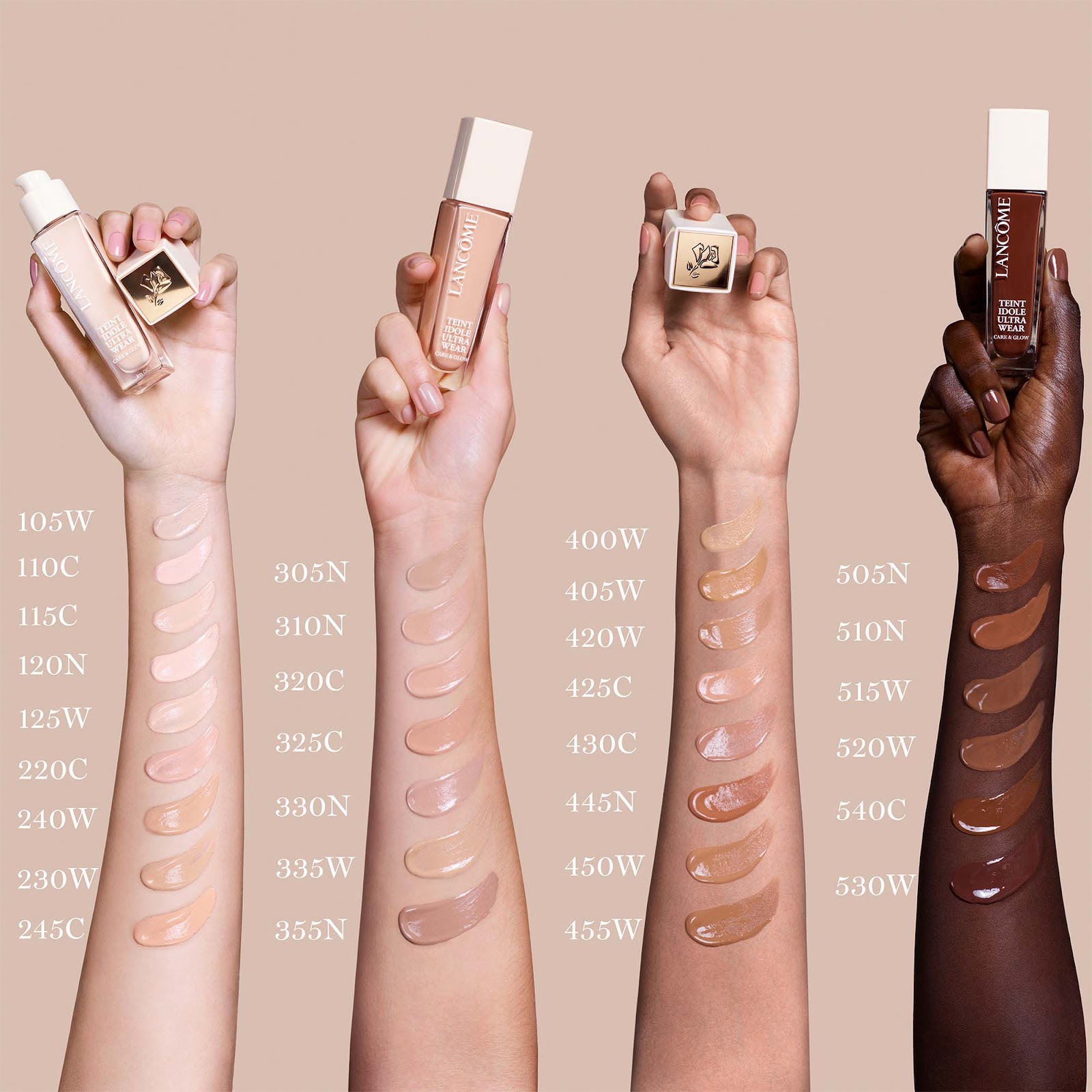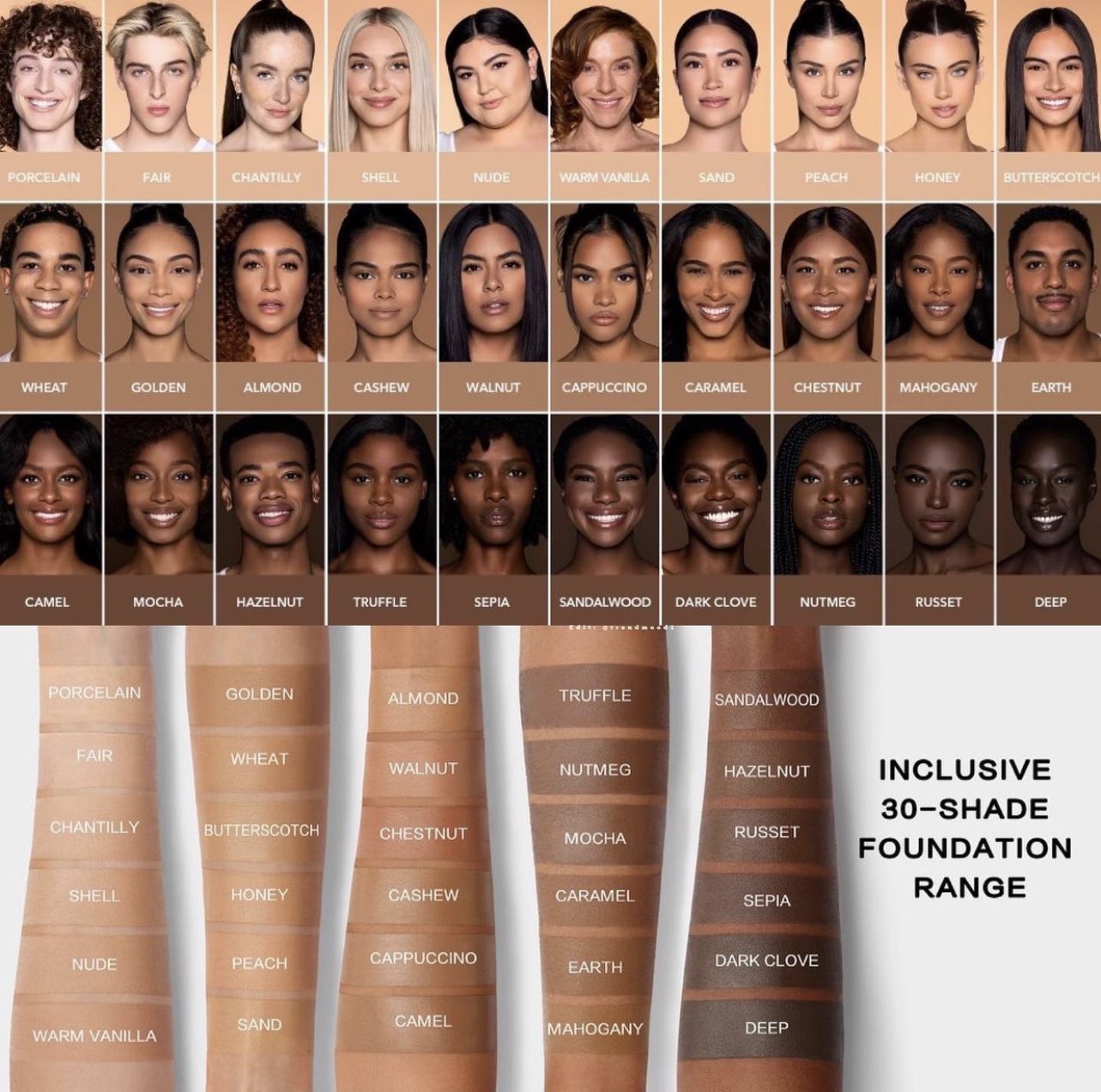In the ever-evolving world of beauty, Gen Z has redefined what it means to create and use makeup, particularly when it comes to foundation. This generation, with its emphasis on inclusivity, diversity, and authenticity, has brought a fresh perspective to the art of the foundation shade range. The days of limited options that cater only to a narrow spectrum of skin tones are long gone, replaced by an era where brands are challenged to create formulas that truly reflect the vast diversity of human skin. But crafting a foundation shade range that meets these demands is no easy feat—it’s an art form that requires a deep understanding of skin tones, undertones, and the science of formulation. This article will delve into the intricacies of creating a foundation shade range, exploring what makes the process challenging, where it all begins, and why some brands excel while others miss the mark. Follow us here at Adidas lawsuit
What Makes Formulating A Foundation Difficult?
Formulating a foundation is a complex process that involves more than just mixing pigments to match skin tones. The challenge lies in creating a product that not only matches a wide range of skin tones but also caters to various skin types and preferences. Gen Z has pushed the industry to move beyond the "one-size-fits-all" approach, demanding foundations that work for oily, dry, combination, and sensitive skin, all while offering different finishes like matte, dewy, or natural. The formulation process also needs to consider the coverage level—whether it’s light and breathable for a no-makeup makeup look, or full coverage for those who want to conceal imperfections. The difficulty is in balancing these factors while ensuring that the foundation feels comfortable on the skin, lasts throughout the day, and looks natural under different lighting conditions.

Where Does A Foundation Formula Begin?
Creating a foundation formula begins with a deep understanding of the skin’s biology and the nuances of skin tones across different ethnicities. The process typically starts in a lab, where chemists and product developers work together to create a base formula that can be adjusted for different shades. This base is crucial as it determines the texture, finish, and wearability of the foundation. Once the base formula is established, the next step is to add pigments. This is where the real challenge begins. Each pigment needs to be carefully selected and mixed to create a shade that not only matches a specific skin tone but also complements the skin’s undertone. The formula must then be tested for consistency to ensure that it provides even coverage without streaking or oxidizing on the skin.

What Role Do Undertones Play In The Formulation Process?
Undertones are one of the most critical factors in the formulation process. While skin tones can vary widely from very fair to deep, undertones are the subtle hues beneath the skin that can be cool, warm, or neutral. Getting the undertone right is essential because it determines whether a foundation will look natural or ashy on the skin. For Gen Z, who value authenticity and self-expression, a foundation that doesn’t match their undertone is a dealbreaker. Brands that understand the importance of undertones in the formulation process can create shades that blend seamlessly into the skin, enhancing the wearer’s natural beauty rather than masking it. This requires a deep understanding of color theory and the ability to create pigments that work in harmony with a wide range of skin tones.

What Goes Into Testing A Foundation Formula?
Testing a foundation formula is a rigorous process that involves multiple stages. After the initial formula is created, it undergoes lab testing to ensure it meets safety and stability standards. This is followed by wear testing, where the foundation is applied to different skin types and tones to see how it performs in real-life conditions. Brands that cater to Gen Z often go a step further by involving a diverse group of consumers in the testing process. This feedback is invaluable as it helps to refine the formula, ensuring it meets the needs of a broad audience. The foundation is tested for longevity, transfer resistance, and how well it maintains its color and coverage throughout the day. Only after passing these tests can the foundation be deemed ready for launch.
Why Do Some Brands Get It Wrong?
Despite the advancements in technology and understanding of skin tones, some brands still get it wrong when it comes to foundation shade ranges. This often happens when brands fail to prioritize diversity in their formulation process or rely too heavily on outdated color models that don’t accurately reflect the variety of skin tones in the real world. Another common issue is that brands may not invest enough in the testing phase, leading to foundations that look good on a limited range of skin tones but fail to deliver on others. Gen Z, with its keen eye for authenticity and inclusivity, is quick to call out these shortcomings, which can damage a brand’s reputation. On the other hand, brands that take the time to understand the complexities of skin tones and invest in thorough testing are often rewarded with loyal customers who appreciate their commitment to inclusivity.
Unique Features of Gen Z Shade Range
What sets the Gen Z shade range apart is its commitment to inclusivity and representation. Gen Z demands a foundation that not only matches their skin tone but also feels like an extension of their identity. This has led to the development of shade ranges that include a wide spectrum of colors, from the fairest porcelain to the deepest ebony. But it’s not just about the number of shades; it’s about the quality of those shades. Gen Z shade ranges are often formulated with skin-loving ingredients that cater to the health and well-being of the skin, such as hyaluronic acid for hydration or salicylic acid for acne-prone skin. The finishes are designed to be flexible, allowing users to build coverage where they need it and sheer it out where they don’t. This versatility is a hallmark of the Gen Z foundation experience, where makeup is seen as a tool for self-expression rather than just a cosmetic product.
Interesting Facts
1. Customization Is Key
Some brands have taken inclusivity to the next level by offering customizable foundation options. This allows users to mix their shades or add pigments to a base foundation to create a perfect match.
2. Vegan and Cruelty-Free Formulations
Gen Z’s commitment to ethical beauty has pushed many brands to develop vegan and cruelty-free foundation formulas, making it possible to find a shade that aligns with their values.
3. Tech Integration
Advances in technology have led to the development of apps that can analyze your skin tone and undertone through a selfie, and then recommend the perfect foundation shade from a particular brand’s range.
4. Gender-Neutral Branding:
Reflecting the values of inclusivity and self-expression, many Gen Z-focused brands market their foundation products as gender-neutral, making them accessible to everyone regardless of gender identity.
5. Cultural Considerations
Some brands have gone beyond the standard light-to-dark spectrum and created shades that specifically cater to cultural nuances, such as the reddish undertones found in many South Asian and Middle Eastern skin tones.
Conclusion
The Gen Z art of the foundation shade range is a testament to the beauty industry’s growing commitment to inclusivity, diversity, and authenticity. Formulating a foundation that meets the needs of a wide range of skin tones is a complex and challenging process, but when done right, it can result in products that not only enhance beauty but also empower individuals to express themselves confidently. As the industry continues to evolve, we can expect to see even more innovation in this space, driven by the demands of a generation that refuses to be confined by traditional beauty standards. The future of the foundation is bright, colorful, and inclusive—just like Gen Z.